Bioavailability
How to submit an article:
- Registered users can submit any published journal article that has a unique DOI (Digital Object Identifier) name or link to Research Hub.
- For example, you can paste the full DOI link:
https://doi.org/10.1109/5.771073or just the DOI name:10.1109/5.771073into the field above and click submit. - The person who is first to submit a valid article to Research Hub will forever be credited for it, and every article submission earns you +6 Research Points.
Related Topics
Published research studies are articles that present the findings of original research that has undergone a peer-review process and has been made publicly available in scholarly journals, books or other media.
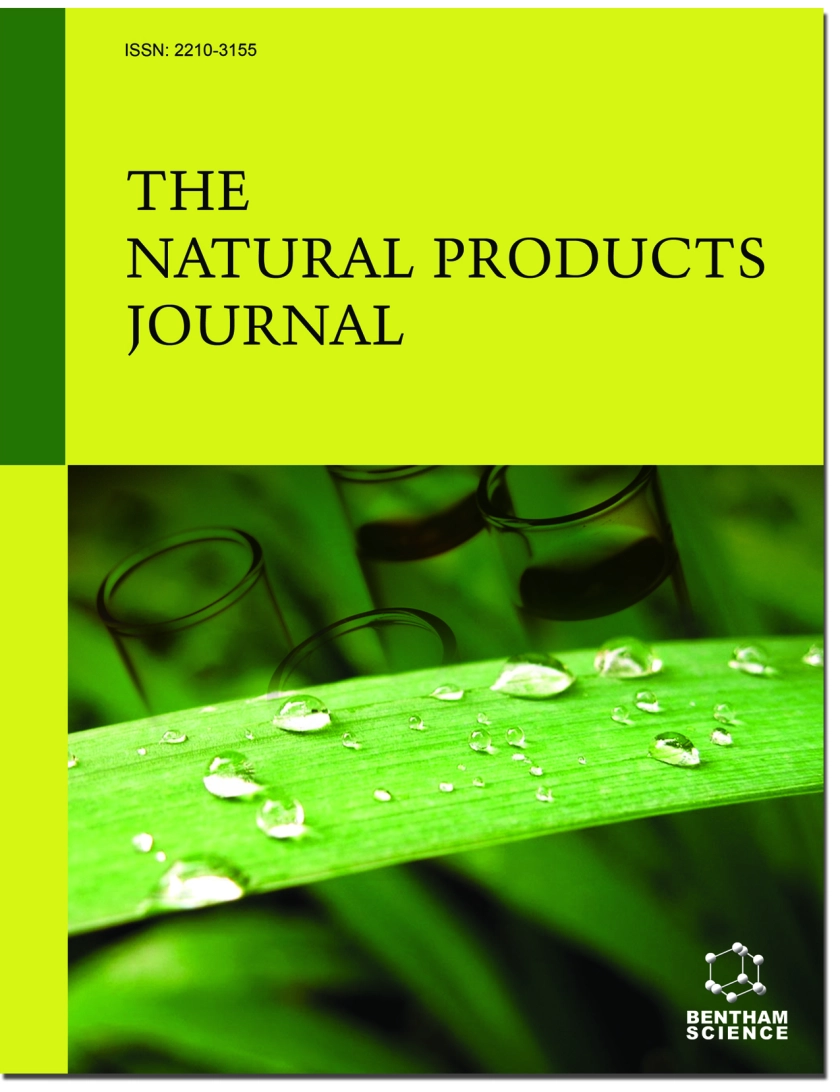
Pumpkin Seeds (Cucurbita spp.) as a Nutraceutical Used In Various Lifestyle Disorders
2024 Feb The Natural Products Journal Wal A, Singh MR, Gupta A, Rathore S, Rout RR, Wal P
Review Article Antioxidant Cardiovascular Disease Depression Anti-ParasitePumpkin seeds are recognised for their medicinal, nutritional, and cosmetic benefits, including anti-diabetic, heart disease prevention, anti-cancer, and antioxidant qualities.

Network pharmacology-based strategic prediction and target identification of apocarotenoids and carotenoids from standardized Kashmir saffron (Crocus sativus L.) extract against polycystic ovary syndrome
2023 Aug 11 Medicine Tiwari A, Modi SJ, Girme A, Hingorani L
Network Pharmacology SaffronThe compounds apocarotenoids and carotenoids found in saffron extract could potentially interact with multiple targets, helping to manage the symptoms of polycystic ovary syndrome.

Exploring the Potential Benefits of Natural Calcium-Rich Mineral Waters for Health and Wellness: A Systematic Review
2023 Jul 13 Nutrients Pop MS, Cheregi DC, Onose G, Munteanu C, Popescu C, Rotariu M, et al.
Systematic Review Meta-Analysis Cardiovascular Disease High Blood Pressure Mineral Water Natural Calcium-rich mineral water Bone Health CalciumNatural calcium-rich mineral waters offer a bioavailable calcium source, beneficial for bone health, cardiovascular function, weight management, and overall well-being.
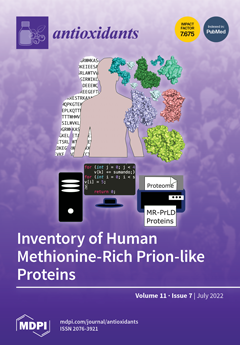
An Overview of the Health Benefits, Extraction Methods and Improving the Properties of Pomegranate
2023 Jun 27 Antioxidants Benedetti G, Zabini F, Tagliavento L, Meneguzzo F, Calderone V, Testai L
Review Article Cardiovascular DiseasePomegranate and its components could offer considerable potential as dietary supplements or supports in treatment for cardiovascular and non-cardiovascular diseases.
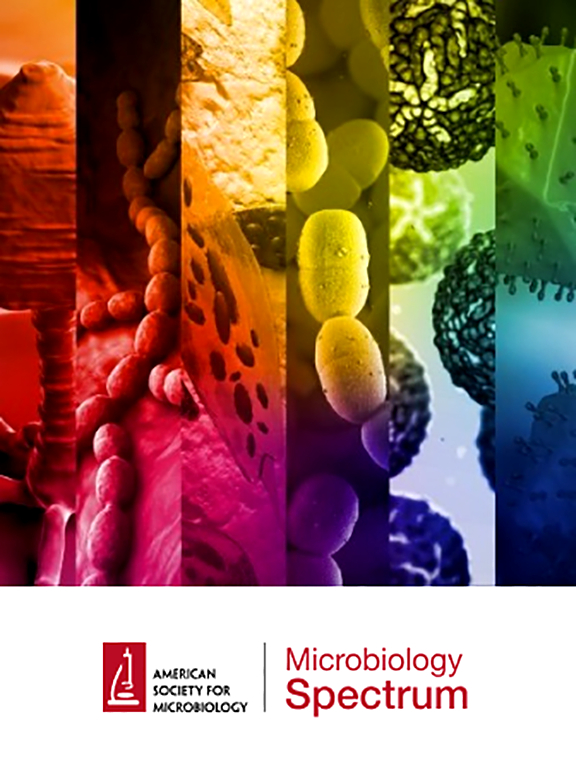
The Effect of Oral Iron Supplementation on Gut Microbial Composition: a Secondary Analysis of a Double-Blind, Randomized Controlled Trial among Cambodian Women of Reproductive Age
2023 Jun 15 Microbiology Spectrum Finlayson-Trick E, Nearing J, Fischer JAJ, Ma Y, Wang S, Krouen H, et al.
Randomised Controlled Trial Iron DeficiencyIron supplementation with ferrous bisglycinate in Cambodian women of reproductive age may increase the abundance of certain bacteria, including potential enteric pathogens.
Research insights are moderated by the Research Hub team and offer an at-a-glance overview of interesting research findings.

2024 The Natural Products Journal
Pumpkin seeds are recognised for their medicinal, nutritional, and cosmetic benefits, including anti-diabetic, heart disease prevention, anti-cancer, and antioxidant qualities.
Review Article Anti-Parasite Antioxidant Cardiovascular Disease Depression
Pumpkin Seeds (Cucurbita spp.) as a Nutraceutical Used In Various Lifestyle
Disorders
Wal A, Singh MR, Gupta A, Rathore S, Rout RR, Wal P

2023 Medicine
The compounds apocarotenoids and carotenoids found in saffron extract could potentially interact with multiple targets, helping to manage the symptoms of polycystic ovary syndrome.
Network Pharmacology Saffron
Network pharmacology-based strategic prediction and target identification of apocarotenoids and carotenoids from standardized Kashmir saffron (Crocus sativus L.) extract against polycystic ovary syndrome
Tiwari A, Modi SJ, Girme A, Hingorani L

2023 Nutrients
Natural calcium-rich mineral waters offer a bioavailable calcium source, beneficial for bone health, cardiovascular function, weight management, and overall well-being.
Systematic Review Bone Health Calcium Cardiovascular Disease High Blood Pressure Mineral Water
Exploring the Potential Benefits of Natural Calcium-Rich Mineral Waters for Health and Wellness: A Systematic Review
Pop MS, Cheregi DC, Onose G, Munteanu C, Popescu C, Rotariu M, et al.

2023 Antioxidants
Pomegranate and its components could offer considerable potential as dietary supplements or supports in treatment for cardiovascular and non-cardiovascular diseases.
Review Article Cardiovascular Disease
An Overview of the Health Benefits, Extraction Methods and Improving the Properties of Pomegranate
Benedetti G, Zabini F, Tagliavento L, Meneguzzo F, Calderone V, Testai L

2023 Microbiology Spectrum
Iron supplementation with ferrous bisglycinate in Cambodian women of reproductive age may increase the abundance of certain bacteria, including potential enteric pathogens.
Randomised Controlled Trial Iron Deficiency
The Effect of Oral Iron Supplementation on Gut Microbial Composition: a Secondary Analysis of a Double-Blind, Randomized Controlled Trial among Cambodian Women of Reproductive Age
Finlayson-Trick E, Nearing J, Fischer JAJ, Ma Y, Wang S, Krouen H, et al.
Review Articles
Review articles summarise and critically evaluate the current state of research on a specific topic or field by synthesising multiple primary research studies.

Pumpkin Seeds (Cucurbita spp.) as a Nutraceutical Used In Various Lifestyle Disorders
2024 Feb The Natural Products Journal Wal A, Singh MR, Gupta A, Rathore S, Rout RR, Wal P
Review Article Antioxidant Cardiovascular Disease Depression Anti-ParasitePumpkin seeds are recognised for their medicinal, nutritional, and cosmetic benefits, including anti-diabetic, heart disease prevention, anti-cancer, and antioxidant qualities.

Exploring the Potential Benefits of Natural Calcium-Rich Mineral Waters for Health and Wellness: A Systematic Review
2023 Jul 13 Nutrients Pop MS, Cheregi DC, Onose G, Munteanu C, Popescu C, Rotariu M, et al.
Systematic Review Meta-Analysis Cardiovascular Disease High Blood Pressure Mineral Water Natural Calcium-rich mineral water Bone Health CalciumNatural calcium-rich mineral waters offer a bioavailable calcium source, beneficial for bone health, cardiovascular function, weight management, and overall well-being.

An Overview of the Health Benefits, Extraction Methods and Improving the Properties of Pomegranate
2023 Jun 27 Antioxidants Benedetti G, Zabini F, Tagliavento L, Meneguzzo F, Calderone V, Testai L
Review Article Cardiovascular DiseasePomegranate and its components could offer considerable potential as dietary supplements or supports in treatment for cardiovascular and non-cardiovascular diseases.

Plant flavonoids bioavailability in vivo and mechanisms of benefits on chronic kidney disease: a comprehensive review
2022 Sep 22 Phytochemistry Reviews Lin Y, Fang J, Zhang Z, Farag MA, Li Z, Shao P
Plant flavonoids exhibit an alleviating effect on CKD through various mechanisms, including the reduction of oxidative stress, immune modulation, anti-inflammation, inhibition of renal fibrosis, anti-apoptosis, and regulation of gut flora. The study explores how plant flavonoids contribute to the improvement of renal health in CKD patients by regulating the intestinal flora through the gut-kidney axis. Additionally, the review introduces the products and development prospects of plant flavonoids in the context of CKD.
Review Article Cucumber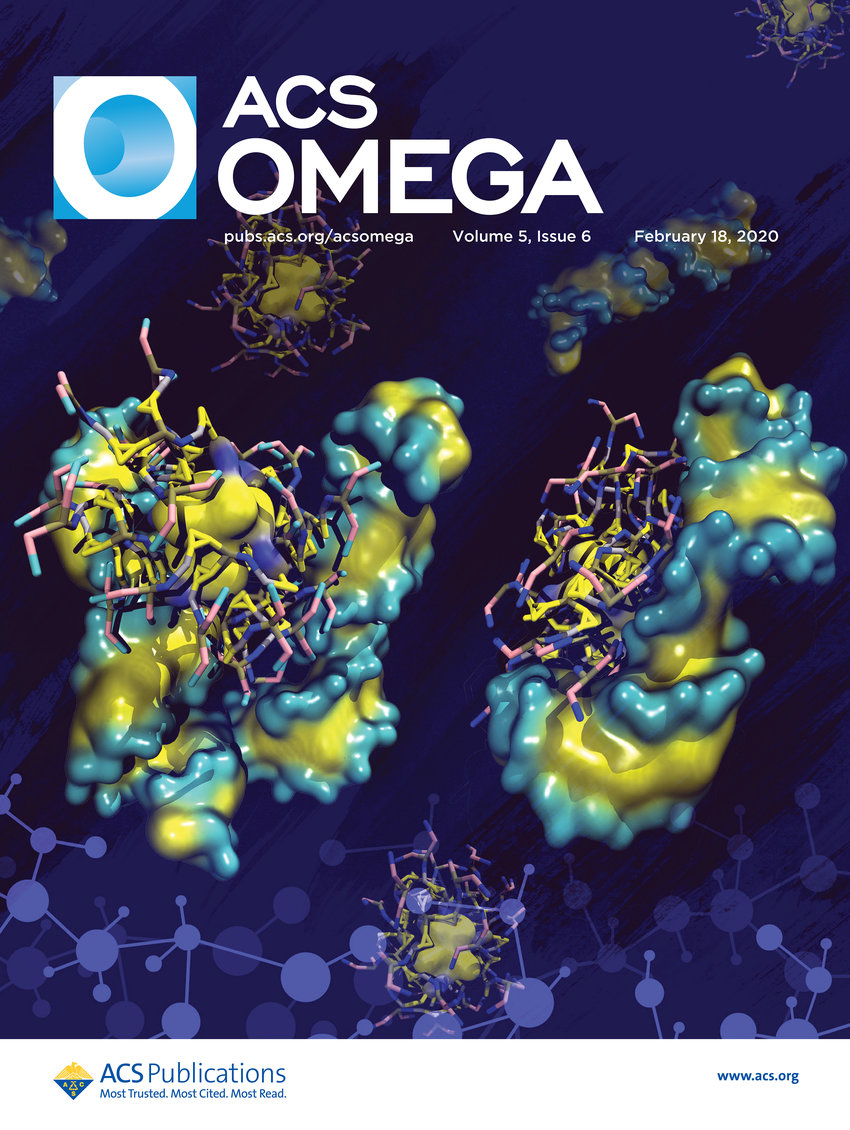
Iron Absorption: Factors, Limitations, and Improvement Methods
2022 Jun 10 ACS Omega Piskin E, Cianciosi D, Gulec S, Tomas M, Capanoglu E
In this context, the importance of studies to increase iron bioavailability is indisputable. Encapsulation, emulsification, chelation, and fortification play an important role in increasing the bioavailability and absorption rate of iron. Commercial iron supplements are available for humans suffering from IDA or wishing to get iron as a supplement. However, because of the free iron-dependent radical generation, some of the commercial iron supplements may produce adverse effects in the gut lumen and mucosal area of the intestine.
Review Article IronClinical Trials
Clinical trials are research studies that involve people and are conducted to evaluate the safety and efficacy of new treatments or interventions, such as drugs, medical devices, or behavioural therapies.
Study Protocols
Published study protocols are detailed plans that outline the objectives, methodology, statistical analyses, and organisation of a research study that have been made publicly available for others to review and use as a reference.
Presentation Slides

Review Article
Pumpkin seeds are recognised for their medicinal, nutritional, and cosmetic benefits, including anti-diabetic, heart disease prevention, anti-cancer, and antioxidant qualities.
Wal A, Singh MR, Gupta A, Rathore S, Rout RR, Wal P

Network Pharmacology
The compounds apocarotenoids and carotenoids found in saffron extract could potentially interact with multiple targets, helping to manage the symptoms of polycystic ovary syndrome.
Tiwari A, Modi SJ, Girme A, Hingorani L

Systematic Review
Natural calcium-rich mineral waters offer a bioavailable calcium source, beneficial for bone health, cardiovascular function, weight management, and overall well-being.
Pop MS, Cheregi DC, Onose G, Munteanu C, Popescu C, Rotariu M, Turnea MA, Dograru G, Ionescu EV, Oprea D, Iliescu MG, Minea M, Stanciu LE, Silișteanu SC, Oprea C

Review Article
Pomegranate and its components could offer considerable potential as dietary supplements or supports in treatment for cardiovascular and non-cardiovascular diseases.
Benedetti G, Zabini F, Tagliavento L, Meneguzzo F, Calderone V, Testai L

Randomised Controlled Trial
Iron supplementation with ferrous bisglycinate in Cambodian women of reproductive age may increase the abundance of certain bacteria, including potential enteric pathogens.
Finlayson-Trick E, Nearing J, Fischer JAJ, Ma Y, Wang S, Krouen H, Goldfarb DM, Karakochuk CD
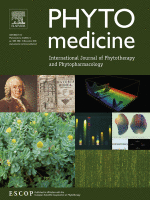
Review Article
Ellagic acid, commonly found in various plant foods, can enhance cancer treatment by boosting the effects of chemotherapy and radiotherapy while reducing their side effects.
Xue P, Zhang G, Zhang J, Ren L

Review Article
Curcumin, a spice used in Indian cooking, shows potential therapeutic effects in various retinal diseases, including during the COVID era.
Chandrasekaran PR, Madanagopalan VG
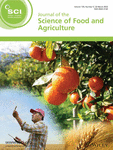
Review Article
Curcumin, derived from turmeric, exhibits an extensive range of biological and medicinal properties, including anti-inflammatory, antioxidant, and antifungal qualities.
Abd El‐Hack ME, El‐Saadony MT, Swelum AA, Arif M, Abo Ghanima MM, Shukry M, Noreldin A, Taha AE, El‐Tarabily KA
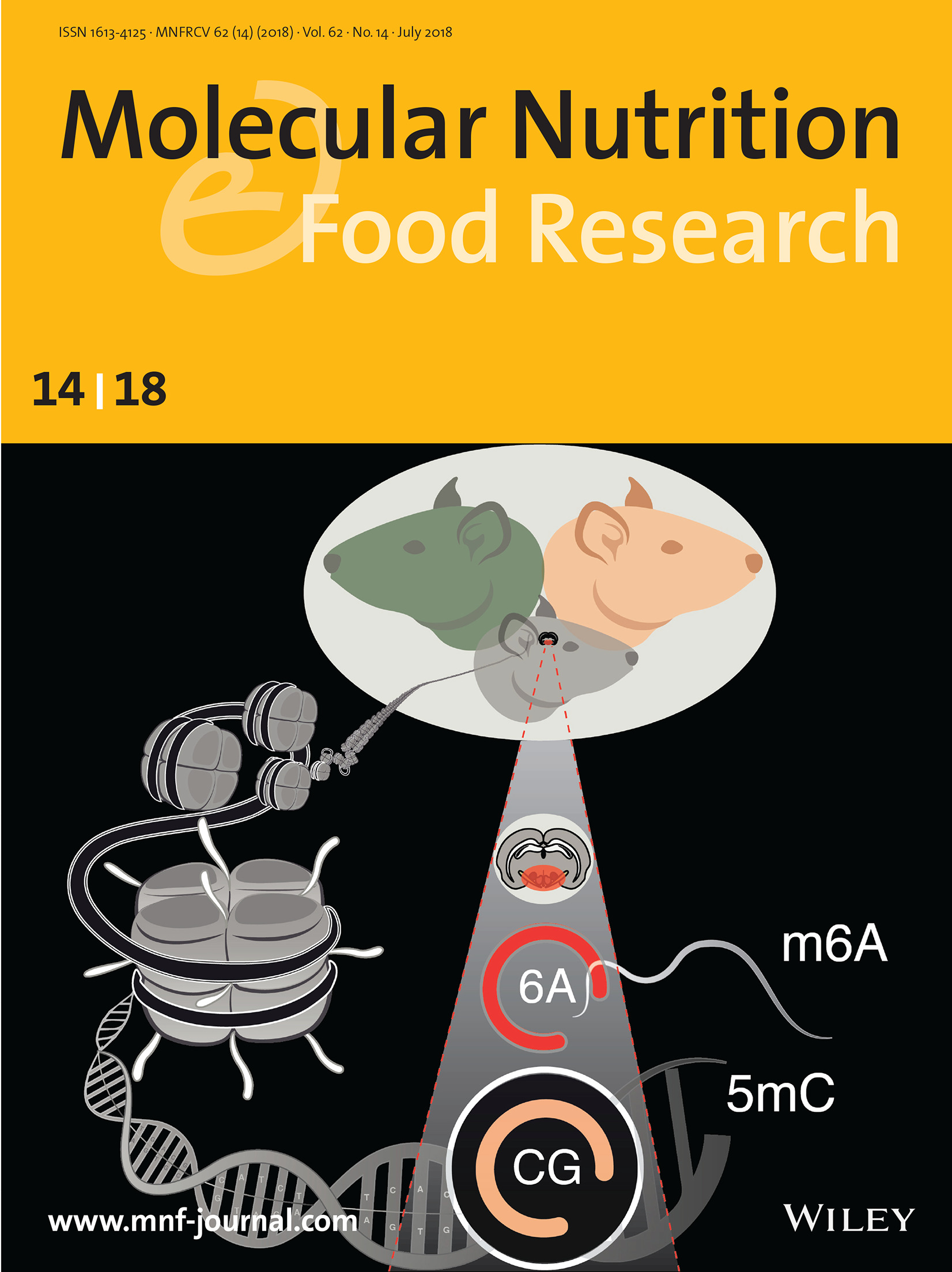
Experimental Study
Boron-rich mineral and medicinal waters can significantly increase boron accumulation in fruit flies and humans, largely elevating their boron status.
Seidel U, Haegele FA, Baumhof E, Jans K, Seidler Y, Kremer D, Bakker SJL, Birringer M, Lüersen K, Bosy‐Westphal A, Rimbach G
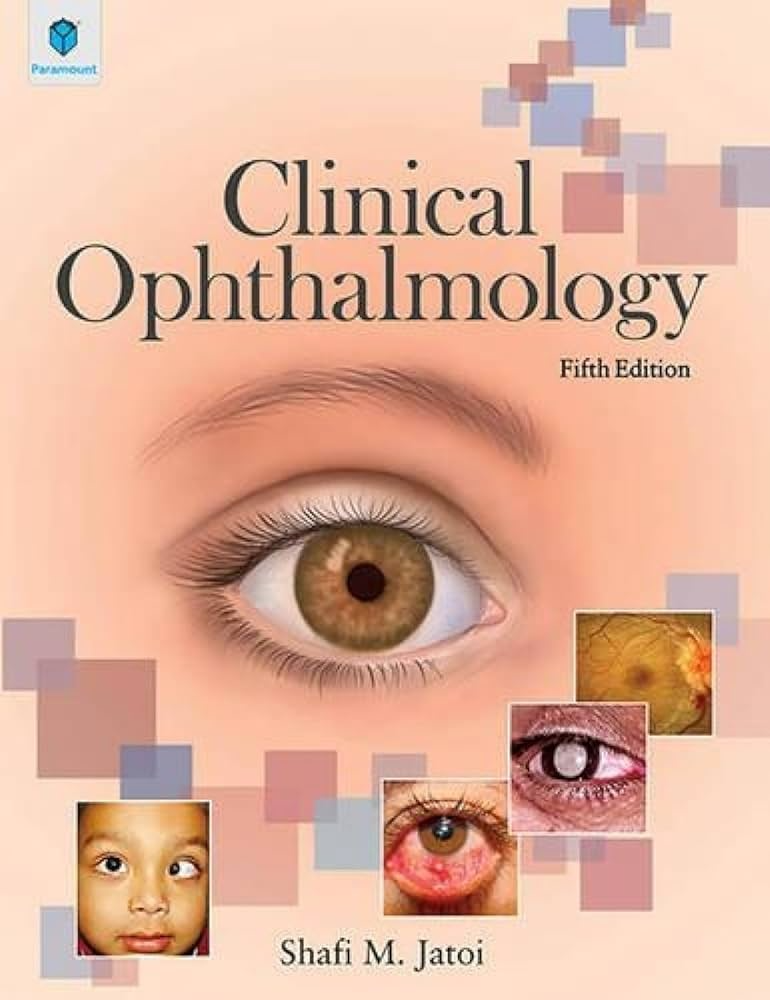
Review Article
Curcumin, with its anti-inflammatory, antioxidant, antimicrobial and antimutagenic properties, is a potential therapeutic agent for retinal diseases.
Nebbioso M, Franzone F, Greco A, Gharbiya M, Bonfiglio V, Polimeni A

Experimental Study
Black pepper and its major component, piperine, can effectively regulate anemia of inflammation by reducing the overexpression of hepcidin, a hormone that controls iron levels.
Banerjee S, Katiyar P, Kumar L, Kumar V, Saini SS, Krishnan V, Sircar D, Roy P
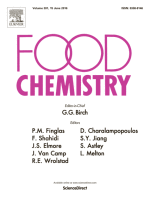
Experimental Study
Soaking nuts doesn't increase the bioavailability of their nutrients, instead, it reduces the mineral concentration, particularly in chopped nuts.
Kumari S, Gray AR, Webster K, Bailey K, Reid M, Kelvin KAH, Tey SL, Chisholm A, Brown RC

Cocoa polyphenols promote gut health by favorably altering gut microbiota composition and producing secondary bioactive metabolites with antioxidant and anti-inflammatory properties.
Sorrenti V, Ali S, Mancin L, Davinelli S, Paoli A, Scapagnini G

Review Article
Black pepper, particularly the piperine it contains, enhances the absorption of iron, potentially improving athletic performance in endurance sports.
Fernández-Lázaro D, Mielgo-Ayuso J, Córdova Martínez A, Seco-Calvo J

Clinical Study
Anthocyanin supplements improve vision health by relaxing ciliary muscles, regenerating rhodopsin, and enhancing retinal blood circulation.
Nomi , Iwasaki-Kurashige , Matsumoto
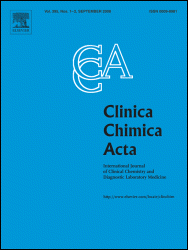
Clinical Study
Migraine patients exhibit lower intracellular magnesium levels, which can be increased by consuming magnesium-rich mineral water, demonstrating its bioavailability.
Thomas J, Millot JM, Sebille S, Delabroise AM, Thomas E, Manfait M, Arnaud MJ
Executive Summary
Write an executive summary in the form of a blog article on the topic of "Research into Chinese medicine treatment for Bioavailability" summarising the research below and using language that can be easily understood by patients and avoiding medical jargon using a professional and caring tone of voice.
Write an executive summary in the form of a blog article on the topic of "Researched Chinese medicine treatments for Bioavailability" summarising the research below in an objective and easy to understand way, and using language that can be easily understood by patients. Group the article into Chinese medicine treatments first, followed by nutrition and other treatments. Avoid using medical jargon and use a professional and caring tone of voice.
Write me a concise but easy to understand executive summary on the topic of "Chinese medicine treatments for Bioavailability" based on the following research that I will give you. Your summary should be 2 paragraphs long in Australian English spelling and include references to the studies.
A Review Article published in 2024 in the journal The Natural Products Journal found that Pumpkin seeds are recognised for their medicinal, nutritional, and cosmetic benefits, including anti-diabetic, heart disease prevention, anti-cancer, and antioxidant qualities. The review article undertakes a comprehensive exploration of the nutraceutical importance of pumpkin seeds. The methodology includes an examination of the various known substances in the seeds, such as phytoestrogens, unsaturated fatty acids, and vitamin E. The study then delves into the different benefits and therapeutic uses of these components stretching from medicinal to nutritional to cosmetic applications. The results of this research are diverse and impressive, with implications for several major health sectors. Their potential anti-diabetic and hypoglycemic properties could suggest a significant role in the management and prevention of diabetes. Meanwhile, the seeds' potential in cardiovascular disease prevention could help to address one of the most pressing global health issues. Moreover, potential anti-cancer properties imply that these seeds could even have a part to play in cancer prevention. The review also described potential additional qualities, such as antidepressant, anti-helminthic (parasite-removing), and antioxidant effects.
A Network Pharmacology published in 2023 in the journal Medicine found that The compounds apocarotenoids and carotenoids found in saffron extract could potentially interact with multiple targets, helping to manage the symptoms of polycystic ovary syndrome. The study utilized a network pharmacology-based approach to identify the possible therapeutic pathways for apocarotenoids and carotenoids in Crocus sativus on polycystic ovary syndrome. The Ultra-High-Performance Liquid Chromatography with Photodiode Array detector (UHPLC-PDA) standardized stigma-based Crocus sativus extract (CSE) was analyzed for these phytochemicals. Information about polycystic ovary syndrome related genes was collected from a knowledge database and networks were established between these targets and Crocus sativus extract phytochemicals to understand its mechanism of action. Through network analysis and screening conditions, the study found four significant targets, including serine/threonine kinase 1, signal transducer and activator of transcription, and two types of mitogen-activated protein kinases. Gene ontology and Kyoto Encyclopaedia of genes and genomes analysis showed that MAP kinase and serine-threonine pathways were crucial targets in polycystic ovary syndrome. Further molecular docking studies were conducted, and carotenoids apocarotenoids were assessed for absorption, distribution, metabolism, excretion, and toxicity predictions. Elements like crocetin, picrocrocin, and safranal showed strong binding affinity for the identified targets. This analysis also revealed that these compounds had excellent bioavailability and could cross the blood-brain barrier without demonstrating toxicity. In summary, the study demonstrated that these phytochemicals could act on the identified targets, thus pointing towards the potentiality of Crocus sativus extract in managing polycystic ovary syndrome.
A Systematic Review published in 2023 in the journal Nutrients found that Natural calcium-rich mineral waters offer a bioavailable calcium source, beneficial for bone health, cardiovascular function, weight management, and overall well-being. This systematic review analyzed peer-reviewed articles, clinical trials, and experimental studies from the past decade. It focused on the health benefits of calcium-rich mineral waters, especially for individuals with lactose intolerance or on plant-based diets. The review process assessed the contribution of these waters to daily calcium intake and their bioavailability compared to other calcium sources. The review found that natural mineral waters high in calcium can significantly enhance calcium intake, with improved absorption rates. These waters show promise in promoting bone health and cardiovascular function, including potential reductions in blood pressure and cardiovascular disease risk. Some evidence suggests benefits in weight management. However, the review highlighted the need for further research on interactions with other dietary components, effects on specific health conditions, and long-term consumption impacts. Despite these gaps, calcium-rich mineral waters are recognized as a valuable dietary calcium source for a diverse population.
A Review Article published in 2023 in the journal Antioxidants found that Pomegranate and its components could offer considerable potential as dietary supplements or supports in treatment for cardiovascular and non-cardiovascular diseases. The review examines a myriad of recent preclinical and clinical studies focusing on pomegranate. To harness the health benefits of pomegranate, different components were extracted and studied. These include juice from the fruit's edible arils, oil from the seeds, and bioactive products from the typically discarded peel. The research also considers advances in encapsulation and green extraction techniques to optimize the use of waste pomegranate products. The studies suggest promising beneficial effects of pomegranate in diverse areas. Though challenges remain, such as limited oral bioavailability and uncertainty concerning the role of active metabolites, the collective findings offer crucial insight into the significant potential of pomegranate as a dietary supplement or co-therapy for a range of diseases, especially cardiovascular and non-cardiovascular ones.
A Randomised Controlled Trial published in 2023 in the journal Microbiology Spectrum found that Iron supplementation with ferrous bisglycinate in Cambodian women of reproductive age may increase the abundance of certain bacteria, including potential enteric pathogens. The study involved a secondary analysis of a double-blinded, randomized controlled trial examining the impact of two different oral iron supplements, ferrous sulfate and ferrous bisglycinate, or placebo on the gut microbiomes in Cambodian women of reproductive age (WRA) over a period of 12 weeks. Stool samples were provided by the participants at the beginning and end of the study for gut microbial analysis. This analysis consisted of 16S rRNA gene sequencing and targeted real-time PCR. In terms of results, it was found that iron supplementation did not significantly change the overall diversity of the gut microbiome in these predominantly iron-replete Cambodian WRA. However, ferrous bisglycinate did lead to an increase in the relative abundance of and showed a trend of an increase for another strain of bacteria, Escherichia. Furthermore, the presence of a virulence gene associated with enteropathogenic Escherichia coli was detected in a greater quantity in the stool samples of those who took ferrous sulfate. This suggests that while the overall biodiversity of the gut microbiome remained stable, certain potential pathogen-associated bacterial populations may have increased due to the iron supplementation.
A Review Article published in 2022 in the journal Phytomedicine found that Ellagic acid, commonly found in various plant foods, can enhance cancer treatment by boosting the effects of chemotherapy and radiotherapy while reducing their side effects. The presented review compiled in vitro and in vivo experimental evidence of the synergistic effect of Ellagic acid (EA) in cancer therapy from multiple databases including PubMed, Web of Science, and Google Scholar. The focus was on the use of EA in conjunction with conservative treatment methods such as chemotherapy and radiotherapy. The results suggest that EA, a polyphenolic compound found in various plant foods, has the potential to enhance the effectiveness of these treatment methods. It was found to improve treatment outcomes when combined with a low dosage of therapeutic drugs or optimized radiation levels. Additionally, EA appears to have a preventative effect against the adverse reactions normally associated with chemotherapy, possibly due to its antioxidant and anti-inflammatory properties. This makes it a promising candidate as a drug adjuvant in cancer treatment.
A Review Article published in 2022 in the journal Graefe's Archive for Clinical and Experimental Ophthalmology found that Curcumin, a spice used in Indian cooking, shows potential therapeutic effects in various retinal diseases, including during the COVID era. The research used PubMed and MEDLINE databases to examine a wide range of studies pertaining to the role of curcumin in various retinal diseases and its use during the COVID era. Specific diseases investigated include diabetic retinopathy, age-related macular degeneration, retinitis pigmentosa, retinal ischemia reperfusion injury, and proliferative vitroretinopathy. In these studies, curcumin's performance was tested in different experimental models, where it demonstrated pleiotropic effects through its action on various cell types like HRPC, HREC and ARPE-19. The research also evaluated the molecule's impact on retinal endothelial cells and its ability to inhibit actions of certain proteins and genes implicated in retinal disease. Moreover, the search also included curcumin's influence in the COVID-19 landscape. Discussing the results, curcumin proved efficacious in retinal disease management by increasing antioxidant enzymes, reducing inflammatory mediators, and inhibiting growth factors. In the context of diabetic retinopathy specifically, curcumin acted by reducing Reactive Oxygen Species (ROS) and inhibiting apoptosis-inducing proteins. Furthermore, curcumin downregulated several inflammatory molecules and hindered retinoblastoma cell proliferation, migration, and apoptosis. In the COVID era, curcumin showcased its potential by inhibiting viral replication and cytokine storm.
A Review Article published in 2021 in the journal Journal of the Science of Food and Agriculture found that Curcumin, derived from turmeric, exhibits an extensive range of biological and medicinal properties, including anti-inflammatory, antioxidant, and antifungal qualities. The research examines turmeric extracts, specifically focusing on curcumin, a yellow biocomponent. An array of its medicinal and biological properties is explored, particularly anti-inflammatory, antioxidant, and antifungal attributes. Traditionally used in various cultures for a range of health issues like inflammation, cough, wounds, liver disorders, and cancers, curcumin's extensive application in treating a variety of diseases potentially positions it as a significant component in modern medicine. The study also notes the successful tolerance of curcumin at high doses with no adverse effects. The analysis extends to the preferred methods for the encapsulation of curcumin, detailing techniques such as nanocomplexing, gelation, complex coacervation, electrospraying, and solvent-free pH-driven encapsulation. These methods have demonstrated effectiveness in encapsulating curcuminoids. Moreover, the chemical traits of curcumin are also highlighted, providing a basis for further potential applications in the development of health-promoting functional products.
A Experimental Study published in 2021 in the journal Molecular Nutrition & Food Research found that Boron-rich mineral and medicinal waters can significantly increase boron accumulation in fruit flies and humans, largely elevating their boron status. The researchers used inductively coupled mass spectrometry to analyze boron concentrations in 381 types of German mineral and medicinal waters, with the highest concentrations found in waters from southwest Germany. They associated the boron content with the concentration of several other bulk elements, including calcium, potassium, magnesium, and sodium. After selecting mineral waters with varying boron content - low, medium, or high - exposure experiments were conducted on fruit flies and humans. Attributed to drinking boron-rich waters, there was a higher accumulation of boron observed. In fruit flies, this build-up of boron mainly occurred in the exoskeleton. Meanwhile in humans, an increase in serum boron and 24-hour urinary boron excretion was recorded. The data provided strong indications that the boron status in both fruit flies and humans could be enhanced through the intake of such boron-rich waters.
A Review Article published in 2021 in the journal Clinical Ophthalmology found that Curcumin, with its anti-inflammatory, antioxidant, antimicrobial and antimutagenic properties, is a potential therapeutic agent for retinal diseases. This review paper uses various pieces of research from the literature to detail the characteristics of curcumin, a molecule produced by plants. The paper particularly focuses on the beneficial and controversial aspects of curcumin. It talks about the retina's susceptibility to oxidative stress due to its cell composition and constant exposure to photons, highlighting that retinal ganglion cells and photoreceptors are particularly sensitive to oxidative damage. The paper also points to studies that link an imbalance in reactive oxygen species to a wide range of retinal diseases. In the discussion of results, it is stated that a number of studies suggest that curcumin can be well tolerated by humans when taken orally and does not tend to have negative effects, making it a promising candidate for retinal disease treatment. However, a primary limitation is curcumin's poor bioavailability; the body can only absorb a small fraction of the substance as an active compound. Despite that, efforts have been made to improve curcumin's accessibility to target tissues in sufficient quantities.
A Experimental Study published in 2021 in the journal Free Radical Biology and Medicine found that Black pepper and its major component, piperine, can effectively regulate anemia of inflammation by reducing the overexpression of hepcidin, a hormone that controls iron levels. The study involves a two-tier investigation, first in vitro, and then in vivo. In the laboratory, different black pepper extracts were interacted with a human liver cell line known as HepG2, and the one derived from methanol (BPME) showed the most promising result because it reduced the transcription of the hepcidin gene significantly. In addition to BPME, piperine was proven to almost entirely suppress hepcidin protein expression at specific concentrations. In the subsequent in vivo experimentation, live mice were artificially induced with an elevated level of hepcidin through oil of turpentine injections. Then they were administered with BPME and piperine, the effects of which significantly reduced the enhanced hepcidin expression. The molecular interaction studies further suggest that piperine directly binds with SMAD1 and STAT3 proteins, the critical factors behind the overexpression of hepcidin. The study found a demonstrable downregulation in hepcidin expression with the use of both the methanol extract of black pepper and the bioactive alkaloid piperine. These substances also interacted with some proteins to lower the overexpression of hepcidin initiated by inflammation. Additionally, there was a noticeable increase in iron bioavailability in the liver of treated test animals, pointing to the potential of these compounds to rectify anemia of inflammation. The findings posited black pepper as a possible therapeutic option for managing this anemic condition.
A Experimental Study published in 2020 in the journal Food Chemistry found that Soaking nuts doesn't increase the bioavailability of their nutrients, instead, it reduces the mineral concentration, particularly in chopped nuts. The study examined the effects of different soaking regimes on the phytate and mineral concentrations in whole and chopped almonds, hazelnuts, peanuts, and walnuts. Four treatments were employed: raw, soaking for 12 hours in salt solution, soaking for 4 hours in salt solution, and soaking for 12 hours in water. To analyze phytate concentrations, high-performance liquid chromatography was used and the mineral concentrations were evaluated by inductively coupled plasma mass spectrometry. In the evaluation of the results, it was observed that the differences in phytate concentrations between treated and untreated nuts were minimal, ranging from -12% to +10%. On the other hand, the soaking process resulted in diminished mineral concentrations, notably for chopped nuts. Furthermore, there were no improvements noted in the phytate:mineral molar ratios as a result of the soaking technique. Therefore, this study effectively disproves the notion that 'activating' nuts yields a greater nutrient bioavailability.
A published in 2020 in the journal Nutrients found that Cocoa polyphenols promote gut health by favorably altering gut microbiota composition and producing secondary bioactive metabolites with antioxidant and anti-inflammatory properties. The study revolves around observing the effects of dietary intake of cocoa polyphenols, bioactive compounds with antioxidant and anti-inflammatory properties, on gut microbiota. These polyphenols have poor absorption in the gut and hence, rarely enter the systemic circulation in their natural forms. Instead, through a bidirectional interaction with the gut microbiota, they stimulate the proliferation of beneficial bacteria and inhibit the growth of harmful ones, thereby acting as a prebiotic. The resulting metabolites from this interaction are bioavailable, and these enter the circulation to reach target organs. The metabolites exhibit substantial antioxidant and anti-inflammatory activities, which improve gut health. These actions augment immunity and reduce the risk of many diseases, documenting a notable health-protective potential of cocoa polyphenols, routed via modulation of gut microbiota composition.
A Review Article published in 2020 in the journal Nutrients found that Black pepper, particularly the piperine it contains, enhances the absorption of iron, potentially improving athletic performance in endurance sports. This study examined the joint administration of Iron (Fe) and black pepper, more specifically its alkaloid piperine, to physically active healthy individuals. Iron is an important micronutrient that aids performance in endurance sports by enhancing the physiological functions related to the transport, storage, and utilization of oxygen. The frequent physical stress and high metabolism experienced by athletes can lead to iron depletion, with possible consequences including reduced aerobic capacity, strength, and slower muscle recovery. While the recommended daily allowance (RDA) of iron is usually fulfilled through diet, absorption rates vary and may be insufficient for some individuals. The combination of piperine and iron supplementation was investigated as a potential strategy to address iron deficiencies, especially among athletes who may experience adverse effects from high-dose iron supplements, such as gastrointestinal disturbances. The concept underlying this study was that piperine, known for its bioavailability enhancement properties, may improve the absorption of iron, thereby reducing side effects and improving treatment adherence. The results, derived from three research studies, revealed that the combined usage of iron with black pepper led to observed improvements in parameters related to iron metabolism without causing any adverse effects. By potentially boosting the efficiency of iron absorption, co-administration may offer a promising development in oral iron supplementation practices, particularly for individuals with greater physical activity.
A Clinical Study published in 2019 in the journal Molecules found that Anthocyanin supplements improve vision health by relaxing ciliary muscles, regenerating rhodopsin, and enhancing retinal blood circulation. The methodology of this review involved studying the effects of Anthocyanin, a supplement popular for eye health. Despite the low bioavailability of Anthocyanin, the supplement is reported to appear in intact form and in various metabolites. The review observes how Anthocyanin crosses barriers within the blood to reach the ocular area. The study also performed an in vitro analysis to comprehend how Anthocyanin impacts the ciliary muscles of the eye, crucial in treating vision conditions like myopia and glaucoma. Findings of the review reveal that Anthocyanin also stimulates the reformation of rhodopsin in the rod outer segment of frogs. The compound further demonstrated how to control eye elongation in a model of chick myopia induced by a negative lens. Ultimately, the review consolidated multiple clinical studies that provide evidence for the improvement of dark adaptation and transient myopic shift following intake of Anthocyanin. The supplement notably improves retinal blood circulation among patients with normal tension glaucoma.
A Clinical Study published in 2000 in the journal Clinica Chimica Acta found that Migraine patients exhibit lower intracellular magnesium levels, which can be increased by consuming magnesium-rich mineral water, demonstrating its bioavailability. The study started by identifying a common issue with lower-than-recommended dietary intakes of magnesium in Western countries. The focus was on migraine patients, as low brain magnesium and impaired magnesium metabolism had been reported in migraine cases. A non-invasive and sensitive test to detect these deficiencies was sought. Magnesium, being an intracellular cation, was tested in 29 migraine patients and 18 control subjects. The tests were for total magnesium in plasma, erythrocytes, lymphocytes and ionized magnesium in lymphocytes. The analysis found that there were lower concentrations of total magnesium in erythrocytes and ionized magnesium in lymphocytes of migraine patients compared to controls. These findings indicated a notable overall difference between the migraine patients and the controls, despite there being overlaps in some individual values. The researchers then subjected the migraine patients to a 2-week intake of a mineral water rich in magnesium. An increase in all intracellular magnesium concentrations was observed, with no effect on plasma magnesium. This increase demonstrated the bioavailability of magnesium from the mineral water. Interestingly, the most sensitive index of magnesium deficiency turned out to be ionized magnesium in lymphocytes, which saw the most significant increase after the intake of the magnesium-rich mineral water.
Moderation Tools
Topic
Sign In
Users not signed in are limited to viewing the 5 most recent items of content.